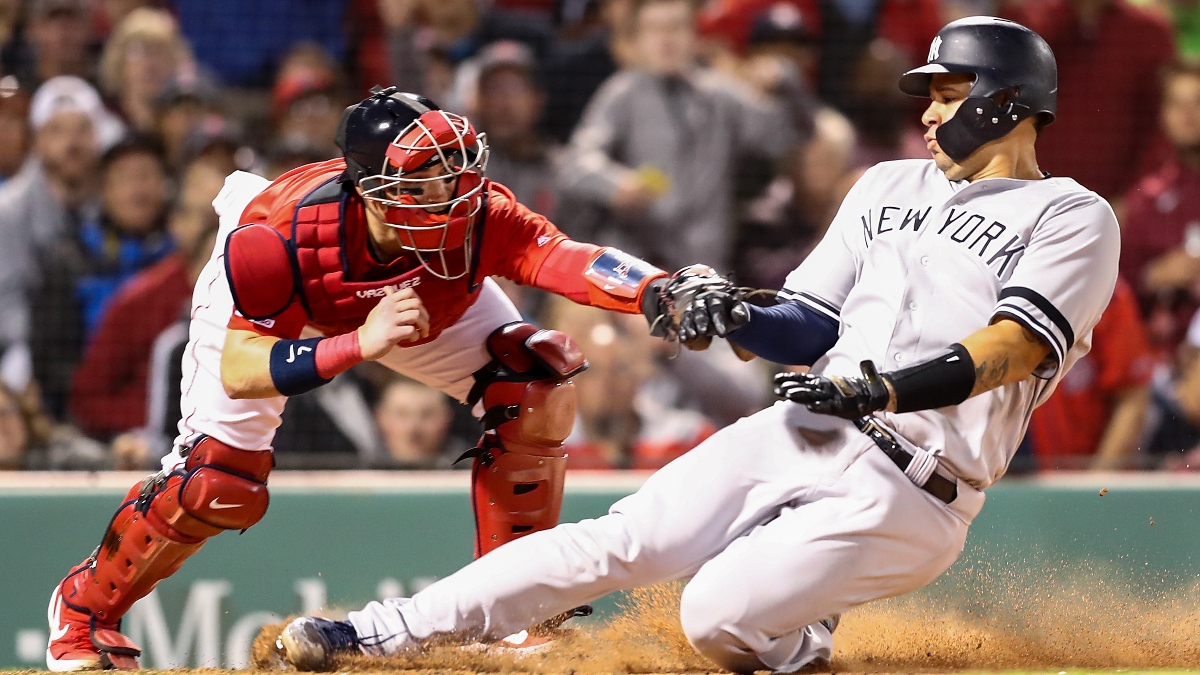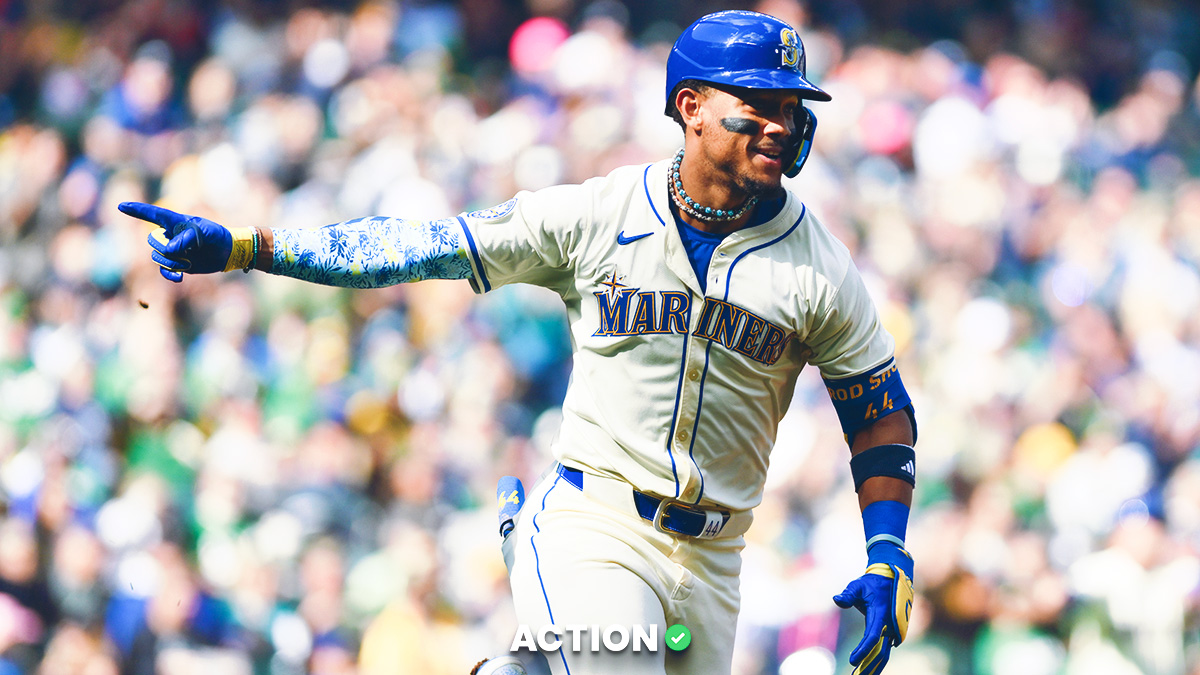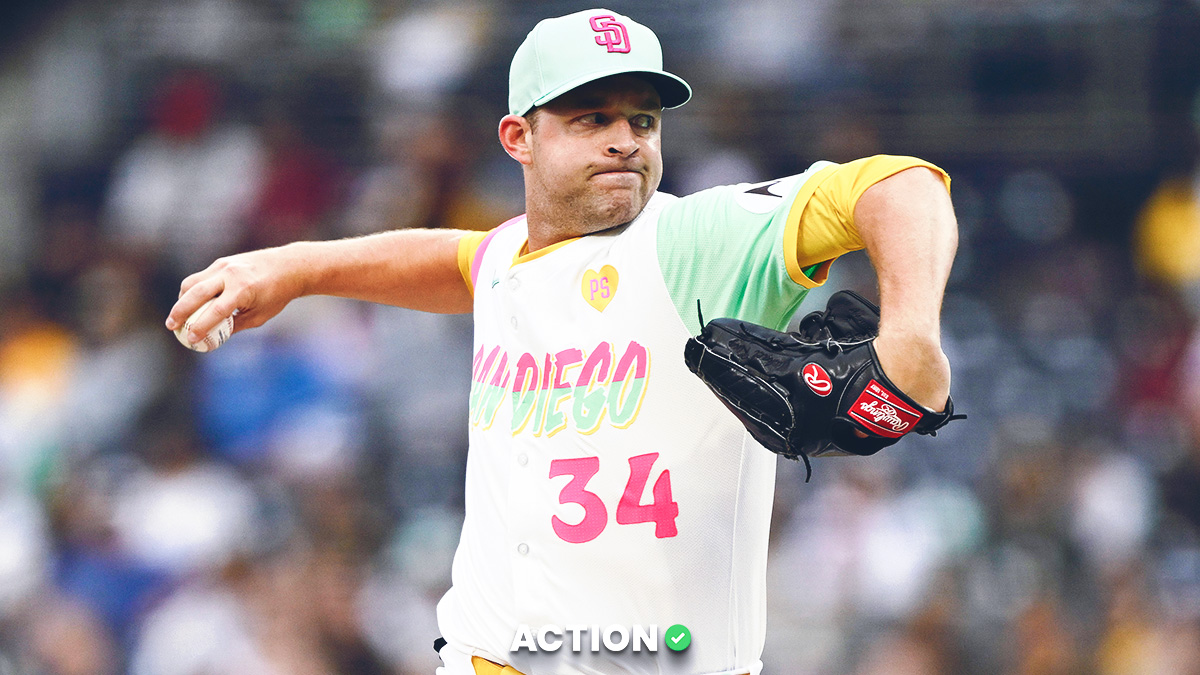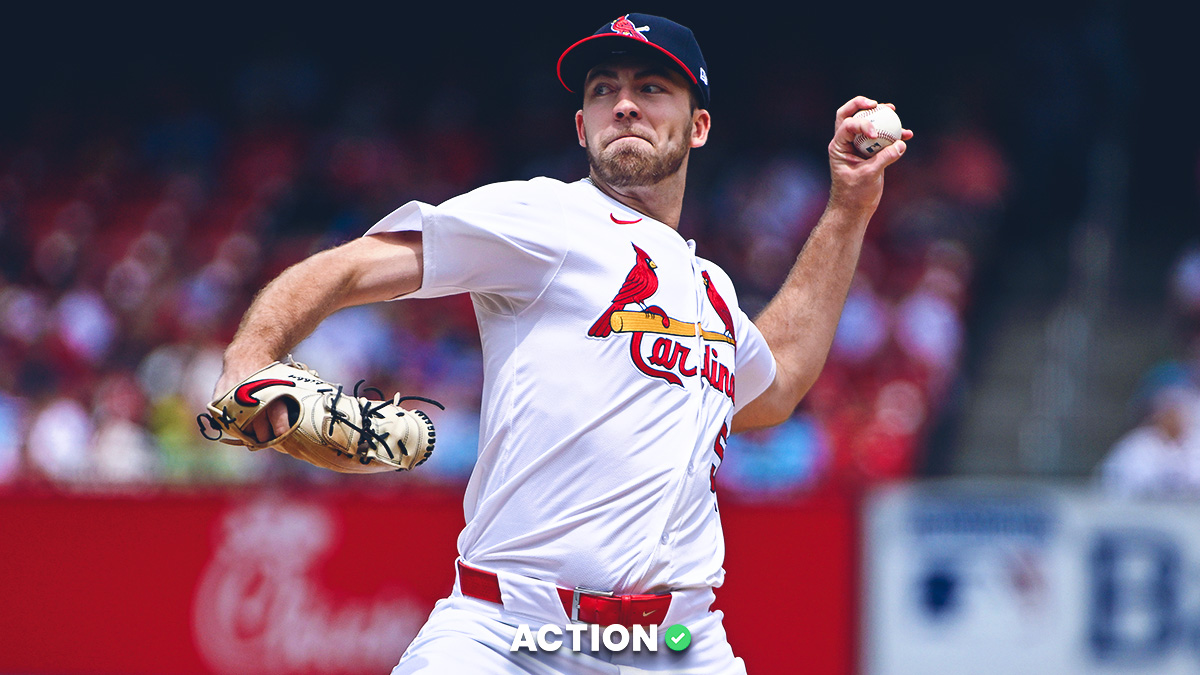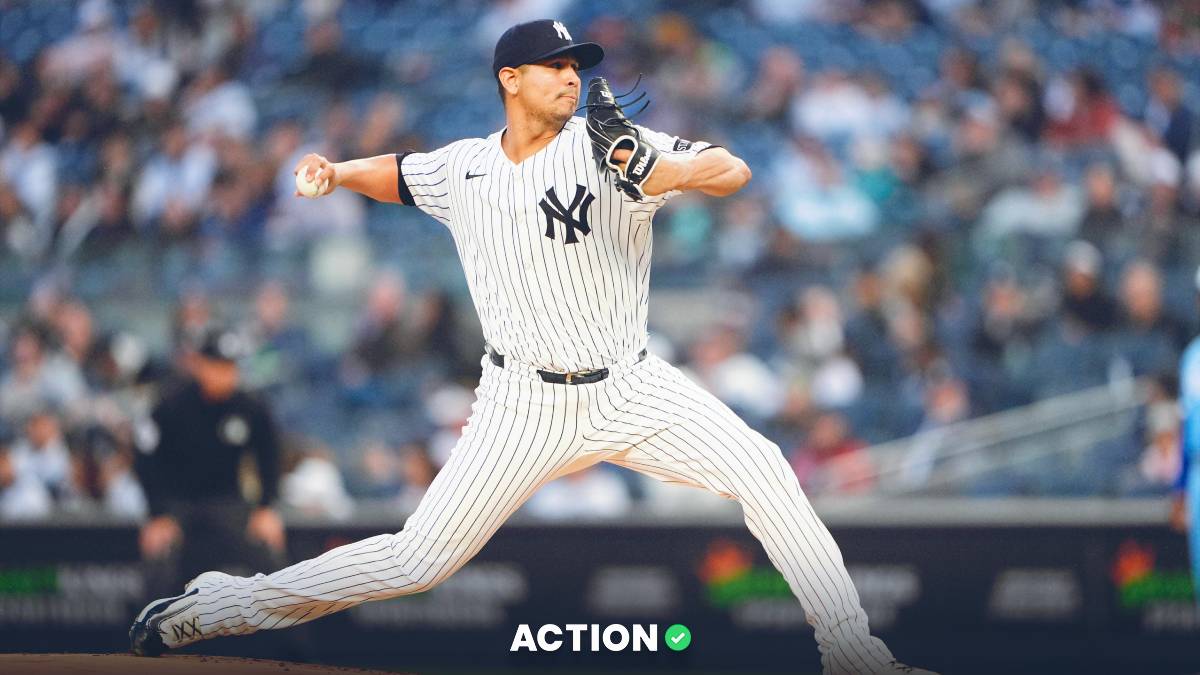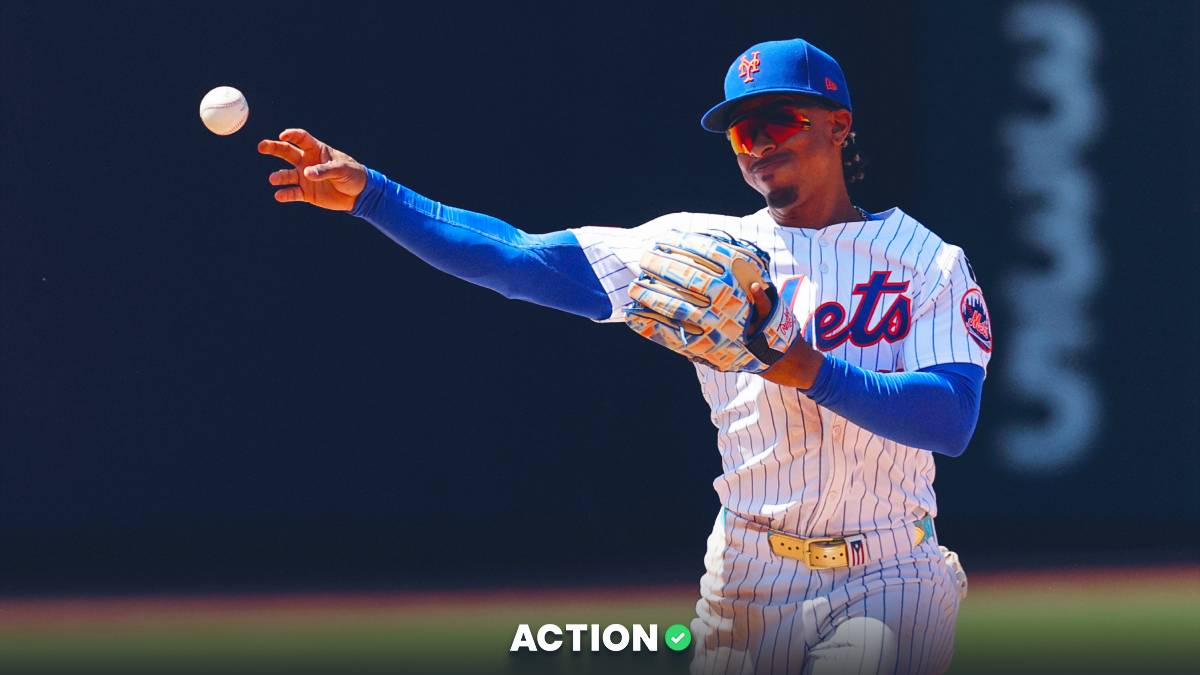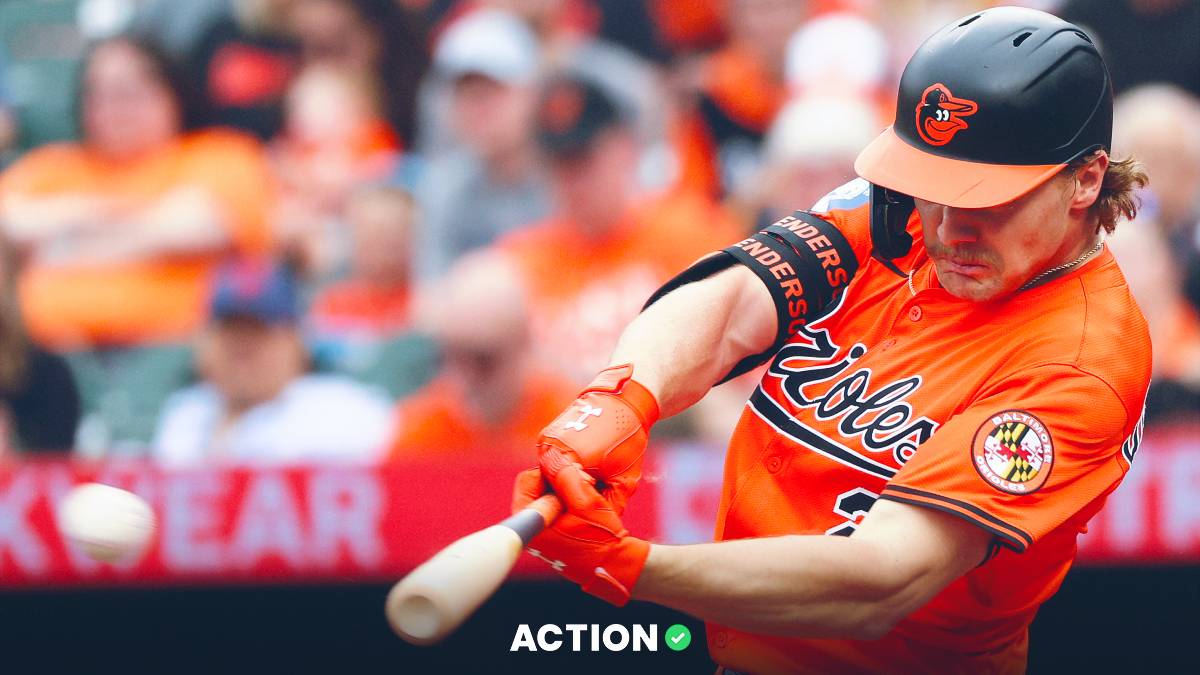When betting on a baseball game, you'll be faced with three standard options: the moneyline, over/under and run line.
An MLB run line is a bet on the margin of victory, like a point spread. But because baseball is low scoring, the spread will almost always be -1.5 for the favorite and +1.5 for the underdog. The payouts for each team will just be adjusted based on each team's strength relative to their opponent.
Some books will list it as the run line, some as a "spread." Here's how it looks at FanDuel for a pair of games.
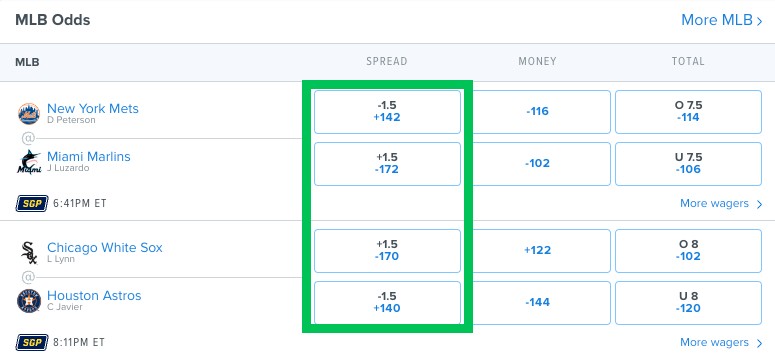
There are of course alternate run lines for every game now, so you can bet either team -3.5 for a big payout (like +350 if the teams are evenly-matched) or +3.5 and have to lay a big price (like -700).
If you're unfamiliar with reading American odds, start here.
What Is the Run Line in Baseball Betting?
The run line is baseball's version of point spread betting, and allows a bettor to wager on whether the favorite will beat the underdog by more than a run or whether the underdog will keep the game within a run.
Take the following example.
Example 1
| Team | Moneyline | Run Line |
|---|---|---|
| Red Sox | +120 | +1.5 (-170) |
| Yankees | -130 | -1.5 (+150) |
In this case, if you want to bet the Yankees to win the game, you'd be laying a -130 — so a $130 wager would return a win of $100.
But, if you're willing to bet that the Yankees will win by more than a run, you could wager $100 and win $150.
Example 2
Now let's look at the moneylines and run lines for a game in which one team is a big favorite.
| Team | Moneyline | Run Line |
|---|---|---|
| Giants | +240 | +1.5 (+130) |
| Dodgers | -280 | -1.5 (-150) |
Most bettors find the run line appealing useful in these games, where one team is a big favorite. They believe it's not a matter of if the Dodgers win, it's by how much, so they're fine laying -1.5 runs for a better price.
Here, a confident Dodgers bettor would be able to take a much more reasonable -150 price by going with the run line instead of laying -280. Giants bettors, meanwhile, would be able to win their bet on a one-run loss while still being paid out at a plus-money price.
Should You Bet the Run Line or Moneyline?
As you might expect, there isn't an obvious answer to this question. After all, oddsmakers are pretty good at setting lines that will result in their own profit over a long period of time. If I could blindly bet run lines and make money, I certainly wouldn't be working anymore.
Favorites are bet on the run line much more often than underdogs, because bettors believe a superior team can blow out an inferior one, and they don't want to pay the full moneyline price on that favorite.
But for those curious, here's a comparison between all MLB run line and moneyline bets over the past 15 seasons (since 2005) in terms of their return on investment (ROI).
| Team | Moneyline | Run Line |
|---|---|---|
| Favorites | -1.9% | -2.0% |
| Underdogs | -1.7% | -2.0% |
In the case of both favorites and underdogs, the ROI takes a slight hit by going from moneyline to run line, which is to be expected as oddsmakers tend to take a bigger cut of run line bets in the form of higher vig.
In the Red Sox-Yankees game from above, for example, the 10-cent juice on the moneyline (-130 vs. +120) became 20-cent juice when looking at the run line (-170 vs. +150).


